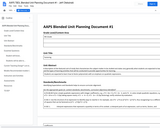
Students are expected to learn how to factor polynomials with an emphasis on quadratic expressions.
- Subject:
- Algebra
- Mathematics
- Material Type:
- Unit of Study
- Provider:
- Michigan Virtual
- Author:
- Jeff Oleksinski
- Date Added:
- 04/11/2017

Students are expected to learn how to factor polynomials with an emphasis on quadratic expressions.

CK-12 Foundation's Algebra FlexBook is an introduction to algebraic concepts for the high school student. Topics include: Equations & Functions, Real Numbers, Equations of Lines, Solving Systems of Equations & Quadratic Equations.

Students find a rule that agrees with a giventable. The mathematics task is intended to be a problem or question that encourages the use of mathematical practices. The dialogue is meant to show how students might engage in the mathematical practices as they work on the task.

Students see how well they understand function expressions by trying to match the function graph to a generated graph. They may choose from several function types or select random and let the computer choose.

Students relate the solutions of a quadratic equation in one variable to the zeros of the function it defines. They sketch graphs of quadratic functions from tables, expressions, and verbal descriptions of relationships in real-world contexts, identifying key features of the quadratic functions from their graphs. Students also graph and show the intercepts and minimum or maximum point.
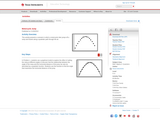
This activity presents a scenario in which a motorcycle rider jumps off a ramp and travels along a quadratic path through the air.
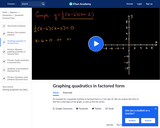
An example for a quadratic function in factored form is y=½(x-6)(x+2). We can analyze this form to find the x-intercepts of the graph, as well as find the vertex.

Students graph polynomials to determine the value and number of zeros for a given polynomial.

Desmos activity that allows students to see where quadratic equations are equal to zero by their graph and table.

Students will draw on their foundation of the analogies between polynomial arithmetic and base-ten computation, focusing on properties of operations, particularly the distributive property. Students identify and make connections between zeros of polynomials and solutions of polynomial equations.
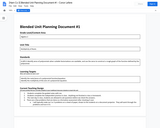
This lesson looks at how to determine the multiplicity of a zero/root of a polynomial function.

Students will continue to interpret expressions, create equations, rewrite equations and functions in different but equivalent forms, and graph and interpret functions, but this time using polynomial functions, and more specifically quadratic functions, as well as square root and cube root functions.
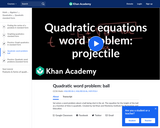
This video that solves a word problem about a ball being shot in the air. The equation for the height of the ball as a function of time is quadratic.

Overview:This presentation goes over several examples of projectile monition word problems and question types.Standard NC.M1.A-APR.3Subject:Mathematics, Math 1 Level:Middle School, High School Grades:Grade 8, Grade 9, Grade 10, Grade 11Material Type:Presentation, Teaching/Learning Strategy Time Required:Less than 15 minLicense:Creative Commons Attribution Non-Commercial Share Alike Language:English
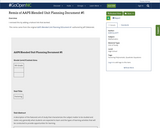
I remixed this by adding a Kahoot link that worked. This remix came from the original AAPS Blended Unit Planning DOcument #1 authored by Jeff Oleksinski.

Practice factoring quadratic equations.

Text and practice on solving quadratics by factoring

Guided notes on quadratic functions and minimum/maximum, x and y intercepts.
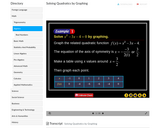
Slide presentation on how graphing and quadratics are related

Guided notes and practice on graphing quadratics by their solutions.